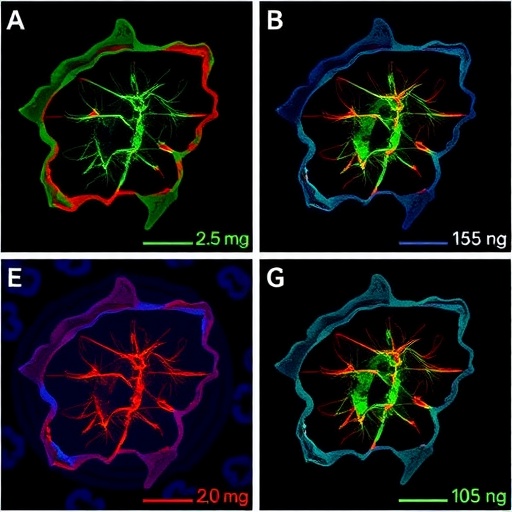Penn researchers simulated the epidemic’s trajectory, finding that even a modest increase in evictions could lead to thousands of excess COVID cases in a single U.S. city

Credit: Nature Communications
PHILADELPHIA – Renter protection policies that have curbed mass evictions during the COVID-19 pandemic have played a key role in preventing the spread of SARS-CoV-2 in U.S. cities, according to a new study published in Nature Communications.
Using an epidemiological model to predict how evictions and eviction moratoria would impact the epidemic, the researchers found, for instance, that in a city of 1 million in which 1 percent of households experience eviction monthly, this could lead to up to 49,000 excess COVID-19 infections. In Philadelphia alone, a fivefold increase in evictions, predicted by some economic analyses, could lead to 53,000 extra infections. The study was led by researchers in the Perelman School of Medicine at the University of Pennsylvania, Johns Hopkins University, and the University of Illinois at Urbana-Champaign.
“Our model shows clearly that policies to stem evictions are not only a warranted but a necessary component of COVID control. As long as the virus is circulating, ending these protections could have devastating implications in the United States,” said co-senior author Michael Z. Levy, PhD/a>, an associate professor of Epidemiology in Penn’s Perelman School of Medicine.
Record levels of unemployment have put millions of Americans at risk of losing their homes throughout 2020 and 2021. At the start of the pandemic, many cities and states enacted temporary legislation banning evictions, some of which have since expired. On September 4, 2020, the Centers for Disease Control and Prevention (CDC) imposed a national moratorium on evictions, which was extended in March 2021. This order is currently being challenged in various courts.
In addition to a number of well-documented adverse outcomes, evictions would also have outsized repercussions on the growth rate of the COVID-19 epidemic, Levy and his research team predicted in the summer of 2020. The effect emerges from increases in household sizes — data suggest that, once evicted, households tend to “double-up,” moving in with friends or family. Household transmission can also limit or delay the effects of measures like lockdowns, which aim to decrease the contact rate in the general population.
“Evictions were particularly concerning for us, because a growing number of contact tracing studies have shown that households are a major source of SARS-CoV-2 transmission. When households get bigger, that gives the virus a greater opportunity to get inside the home, and then, a greater chance to spread outside of it — to coworkers, friends, and other family members,” study co-author Alison Hill, PhD, an assistant professor at the Johns Hopkins University School of Medicine.
To quantify this effect, the research team modified an epidemiological model known as SEIR (susceptible, exposed, infectious, and recovered) to track the transmission of SARS-CoV-2 through a hypothetical metropolitan area of 1 million individuals. They then used a two-layer “network model” to show the contacts within a city population over which infection can spread: One layer described contacts within the household, estimated from the 2019 American Community Survey of the U.S. Census, and the second layer constituted contacts outside the household, such as work colleagues, classmates, and friends.
The researchers modeled evictions that resulted in the “doubling up” of households by merging each evicted household with one randomly selected household in the network. They then adjusted the number of contacts outside the household over the course of the simulations to capture the effects of lockdown measures and their subsequent relaxation.
The research team found that with a low monthly eviction rate of 0.25 percent, an estimated 0.5 percent more of the population could become infected with COVID-19 — or about 5,000 excess cases per 1 million residents — compared to if there were no evictions. A 1 percent monthly eviction rate could lead to 19,000 to 49,000 excess cases. With an eviction rate of 2 percent per month, that number jumps to 50,000 to 100,000 excess infections in a single city.
“Our results suggest that the CDC-mandated national order prohibiting evictions from Sept 4 – Dec 31, 2020 likely prevented thousands of excess COVID-19 infections for every million metropolitan residents,” according to the study authors.
Their initial model assumed that mixing between households occurs randomly throughout a city and that evictions are uniformly distributed. However, data throughout the pandemic has consistently showed that both COVID-19 and evictions disproportionately affect poorer, minority communities. The research team therefore adjusted their model to evaluate the effect of evictions in a specific, diverse city – Philadelphia, Pennsylvania, which has one of the highest eviction rates among large U.S. cities.
In July 2020, Philadelphia’s City Council passed the Emergency Housing Protection Act, in an effort to prevent evictions during the pandemic. The city was sued by a lobbyist group, which questioned whether the legislation was of broad societal interest, rather than protecting a narrow class of residents. This prompted Levy’s team to assess the claim.
Their simulations showed that allowing evictions to resume in Philadelphia could substantially increase the number of COVID infections in the city, and that these increases would be felt among various socioeconomic populations, including those experiencing a low number of evictions. With evictions occurring at only their pre-pandemic rates, the epidemic would infect an extra 0.3 percent of the Philadelphia population, or 4,700 individuals. However, the researchers point out, many economic analyses predict the eviction crisis could be much higher if allowed to resume, due to the economic fallout associated with COVID-19. With a five-fold increase in evictions, excess infections would increase by 53,000 in the city.
“These simulations show that a change that seemingly only affects a small proportion of the population can have a great impact across interconnected communities,” Levy said. “Evictions not only affect the evicted, but they can endanger an entire city.”
###
Additional Penn authors include Justin Sheen, Julianna Shinnick, and Maria Florencia Tejeda.
This work was supported by grants from the U.S. National Institutes of Health DP5OD019851 and R01AI146129, the COVID Supplement CDC-HHS-6U01IP001137-01, and from Google Cloud and the Google Cloud Research Credits program.
Media Contact
Lauren Ingeno
[email protected]
Original Source
https:/
Related Journal Article
http://dx.




